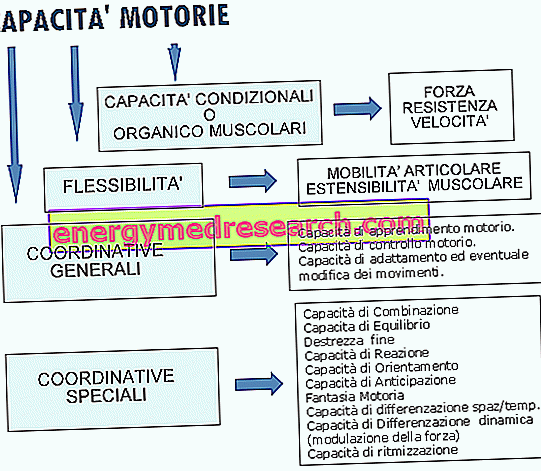Edited by Alessandro De Vettor
It is now established that training, whatever it may be, is more effective the more it harmonizes or even exploits the short and long-term hormonal variations to which our body is subject.

This consideration - which is particularly important in the case of women's training, as the woman's body periodically undergoes real "hormonal storms" - is the basis of the "POM" method. This proposes a cyclization that follows the hormonal trend of the woman during the phases of the menstrual cycle.
As is known, the menstrual cycle is a coordinated series of hormonal and morphological events that lead to ovulation and prepare the endometrium for the implantation of the fertilized egg. On average, the menstrual cycle can last from 25 to 35 days.
This period is characterized by 4 distinct phases:
- MONTHLY FLOW: (4-5 days)
If pregnancy does not occur there is a collapse in the levels of estrogen and progesterone due to the exhaustion of the corpus luteum, with the exfoliation of the uterine mucosa and consequent menstruation (hemorrhagic phase)
- FOLLICULAR PHASE: (10-16 days)
it is the maturation phase of the dominant follicle through the stimulation of FSH and estrogen secretion
- OVULATORY PHASE: (36 hours)
Peak phase of LH and FSH with bursting of the Graafian follicle and oocyte release
- LUTEINIC PHASE: (14 days)
Corpus luteum formation and increased progesterone secretion. The endometrial glands appear to be in full activity and abundantly vascularized.
Based on these factors, the POM acronym training method was developed that describes the three phases: P ostestrual / O vulatoria / M stance. It provides a differentiated type of training for each of the individual phases mentioned, each lasting 9 days.
The programming, which must start on the first day after the end of menstruation, is structured as follows.
1st Phase: Post-menstrual:
This first phase, lasting 9 days and characterized by the presence of the pituitary FSH hormone, is usually accompanied by an optimal psychological condition. The proprioceptive sensitivity is high, joint mobility is greater and strength is sufficient. We then proceed with a capillarization program through the use of specific circuits to be performed in 5 total training sessions.
| HORMONES | PHYSICAL STATE | WORK OUT | PHASE | FREQUENCY |
| FSH | Better psychological conditions High proprioceptive sensitivity Greater joint mobility Good condition of strength | Capillarization Circuit training | 9 days | 5 training sessions |
2nd Phase: Ovulatory:
In the second phase (9 days) we enter the period in which the levels of progesterone begin to increase. Aerobic activity is therefore particularly indicated, which will benefit from the better vascularization of the ovulatory period, followed by anaerobic training in the post-ovulatory period characterized by a condition of greater physical strength. The training sessions will be 4 in "Total Body" mode
| HORMONES | PHYSICAL STATE | WORK OUT | PHASE | FREQUENCY |
| Progestive Production | Good physical strength conditions Good psychological conditions | anaerobic | 9 days | 4 training sessions |
3rd Phase: Menstrual:
The 9 days, of the third and last phase, are characterized by a progressively decreasing physical and psychological condition; the levels of estrogen and progesterone suffer a sudden collapse. It is therefore recommended not to fatigue with heavy workouts, but to do 3 medium-low intensity aerobic training sessions and, on menstruation days, engage in exercises for joint mobility and relaxation such as stretching and autogenic training.
| HORMONES | PHYSICAL STATE | WORK OUT | PHASE | FREQUENCY |
| Progressive collapse of Estrogens and Progesterone | Psycho-physical fatigue Depression Psychological disorders Crisis mood | Aerobic | 9 days | 3 aerobic training sessions 1-2 sessions of Stretching e Autogenic training in the menstrual phase |
What has been said about the POM is obviously short and schematic. The method is very articulated and offers highly diversified training sessions according to the phases of the cycle.
It is therefore good to remember that to set up a program of this type it is necessary to carefully evaluate the client by professionals in the sector, who will evaluate whether the method is appropriate and how to obtain the best results. We cite, just as an example, that the POM is not indicated in the case of particular pathological conditions such as anemia, anorexia / bulimia or in the presence of disorders affecting the menstrual cycle such as Amenorrhea, Oligomenorrhea, Polimenorrhea, Dysmenorrhea (...) nor in contraceptive pill therapy.
NOTE : the contents of this article are protected by copyright law, so they cannot be published, rewritten, distributed or marketed. The Download of the document may be performed only for personal and non-commercial use. Its possible use in websites can only take place with the author's written authorization (Alessandro De Vettor) and citing the source.



